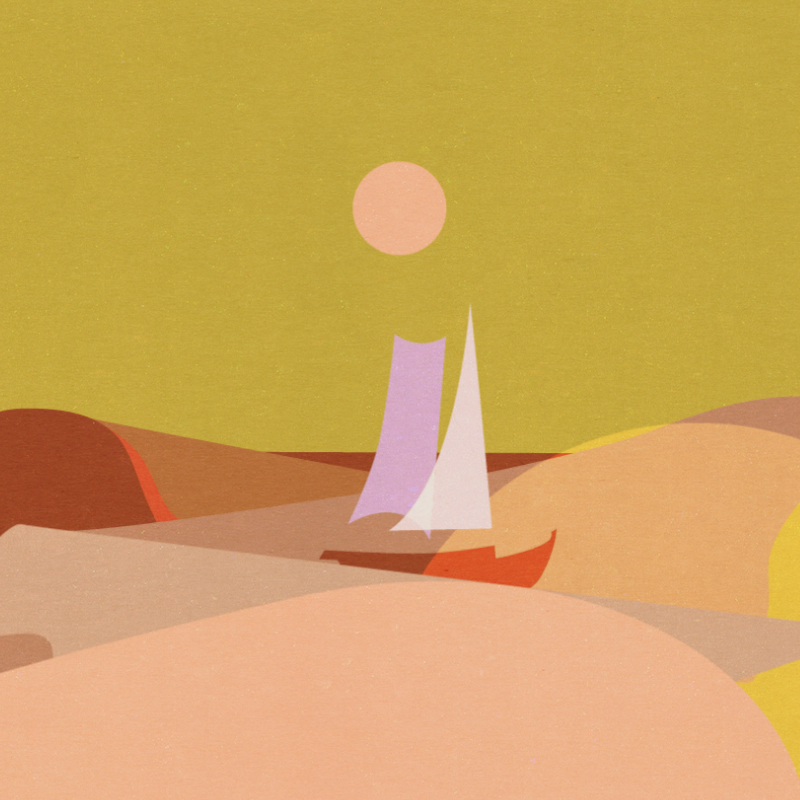Why Are the Dunes of the Curonian Spit Moving?
> BACK TO 100 STORIESListen to this text (Lithuanian):
The Curonian Spit is a 98 km long sandy peninsula that separates the Baltic Sea from the Curonian Lagoon – the inland gulf of the Baltic Sea. The Spit is shared almost equally between the Republic of Lithuania and the Russian Federation – Lithuania has 52 km of the peninsula. The Curonian Spit can be reached from Klaipėda by ferry.
How did the Curonians appear in the name of this peninsula? Courland is the western part of Latvia. During the wars with the Swedes in the seventeenth century, many refugees, whom the locals called Curonians, flowed to Courland. They brought things that now are considered to be part of the cultural heritage of the Curonian Spit – Kurenkahns (flat bottomed boats with two masts) and weather vanes. In addition, the Curonians taught the locals how to hunt crows. Life on the Spit was hard, so if they didn’t manage to catch enough fish, they would hunt crows for food – they ate the meat of the birds, and stuffed pillows and mattresses with their feathers.
How did the Curonian Spit peninsula appear? The legend says that the giantess Neringa brought sand in her apron and poured out a long embankment so that her beloved fisherman's boat would not be tossed about by the waves and winds of the sea. Scientists, of course, have a different opinion. According to them, the Curonian Spit was formed about six thousand years ago from the peninsula, which ended where Nida currently is, and several nearby islands.
Four to five thousand years ago, Nerija was overgrown with grass, shrubs and later forest. But farming, grazing livestock, and fires constantly devastated it. The Seven Years' War of the eighteenth century, when the army of the Russian Empire occupied the peninsula and cut down the trees for its own needs, also increased the deforestation. The roots of the trees stopped the wind from moving the sand, so when the forests disappeared, the dunes began to move again. At the beginning of the nineteenth century, the entire Curonian Spit, except for small areas, turned into a sand desert. Fourteen villages were buried under the sand from the mid-seventeenth to mid-nineteenth century. The villages were not covered overnight, but slowly, over a couple of years. As a result, the residents were able to move out with their belongings and animals. Sometimes even wooden buildings, which were easy to take apart, were relocated.
To combat the drifting dunes, pine trees have been planted in the Curonian Spit. The local post carrier David Gottlieb Kuwert and his son George David were the first to plant pine trees in Nida in the 19th century.
The natural environment of the Curonian Spit, the view of the calmly simmering lagoon and the sliding dunes reminiscent of the desert, attracts not only tourists. The German writer Thomas Mann lived here and owned a house, currently a museum, in Nida. The French philosopher Jean Paul Sartre visited as well – a sculpture of him is built in the dunes of Nida. Due to its unique natural environment, the Curonian Spit is included in the UNESCO World Heritage List.

